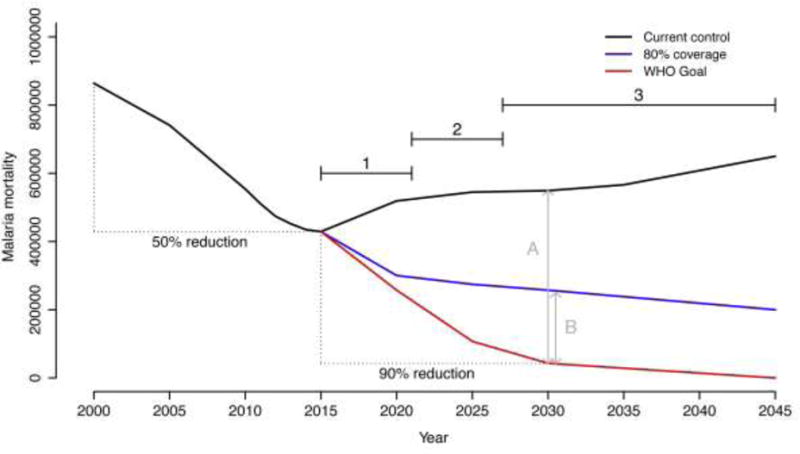Figure 1. Estimate of historic and projected global deaths due to malaria based on different control scenarios.

The figure (modified from [9]) shows estimates of global malaria deaths from 2000–2045. The 50% decline in malaria related mortality recorded from 2000–2015 is largely attributable to the wide scale implementation of vector control tools (Long-lasting insecticidal nets (LLINs) and indoor residual spraying (IRS)) [1,2]. The future projections are based on a model analysis that considers different scenarios of access to vector control, together with malaria drug treatments [9].
The graph is modified from Figure 1B of Griffin et al. [9] by using data from the 2016 World Malaria Report [89] to convert the original y-axis of ‘deaths per 1000 people per year’ into estimates of overall malaria mortality per year, and adding the target line for future decline in malaria deaths from the WHO Global Technical Strategy. The back line indicates resurgence in malaria deaths if control efforts remain at current levels. The blue line is the predicted decline in deaths assuming coverage of current control tools can be increased to reach 80% of the population at risk. The red line represents the target set out in the WHO Global Technical Strategy [1], which aims for a 90% decline in malaria deaths by 2030 and then ultimate elimination thereafter.
The arrows A and B illustrate the differences between the WHO target and the two control scenarios. Business as usual clearly represents a massive failure (A). Perhaps more notably, even substantial intensification of existing tools still yields a substantial shortfall (B). These gaps in control demonstrate the need for new interventions. The numbered horizontal lines refer to the estimated timelines for implementation of a range of prospective control tools where: (1) refers to tools that are close to field ready (e.g. attractive toxic sugar baits, housing improvement, livestock targets, next generation LLINs and IRS); (2) represents tools that require a few more years for product development (e.g. improved topical repellents, long lasting endectocides for human use); and (3) tools that either for technical and/or regulatory reasons are still far from operational use (e.g. transinfection with Wolbachia, population replacement strategies using genetically modified mosquitoes and gene drive). The fact that the WHO target shows an immediate deviation from the two control scenarios highlights a critical role for tools that can be implemented in the short- and medium-term (1 and 2).
